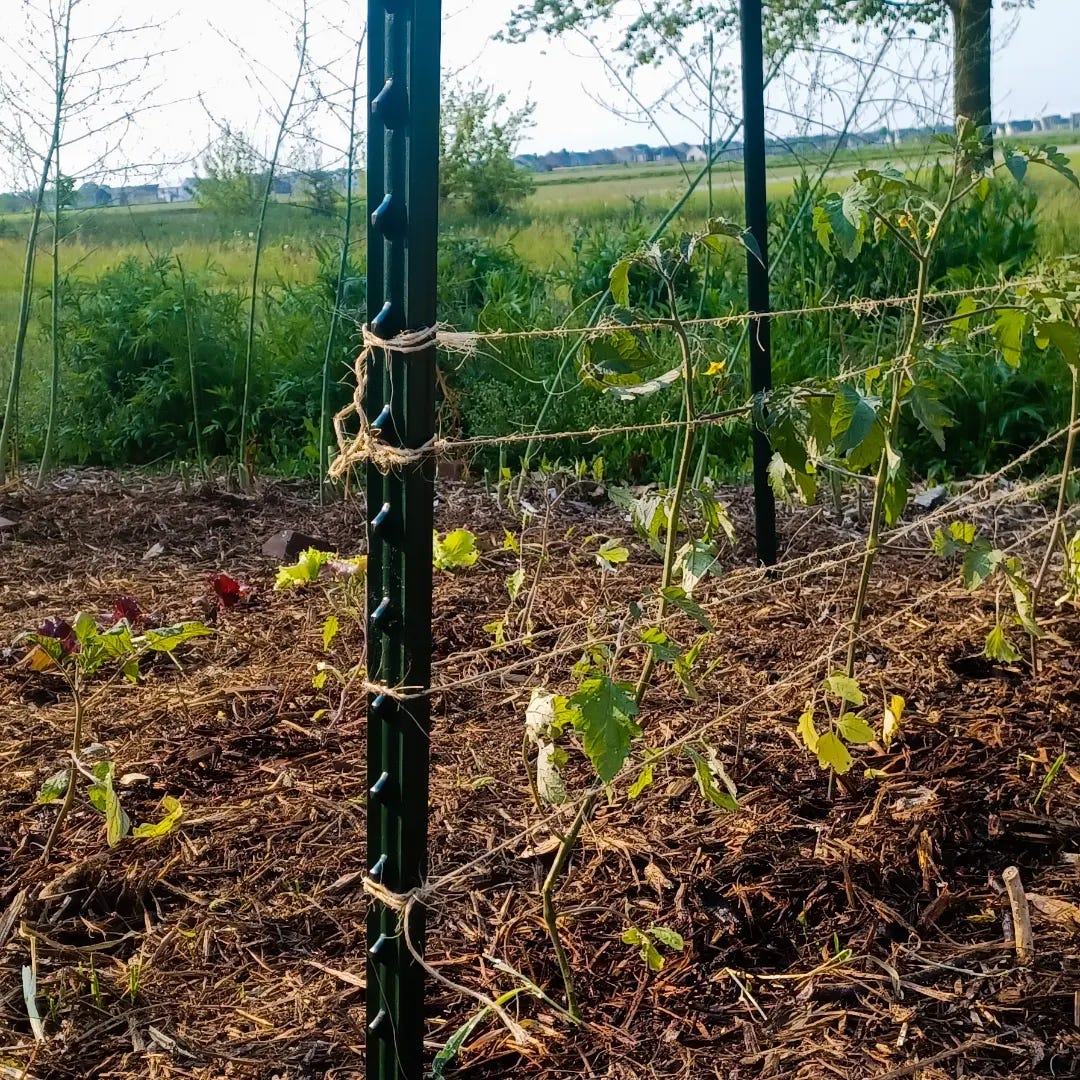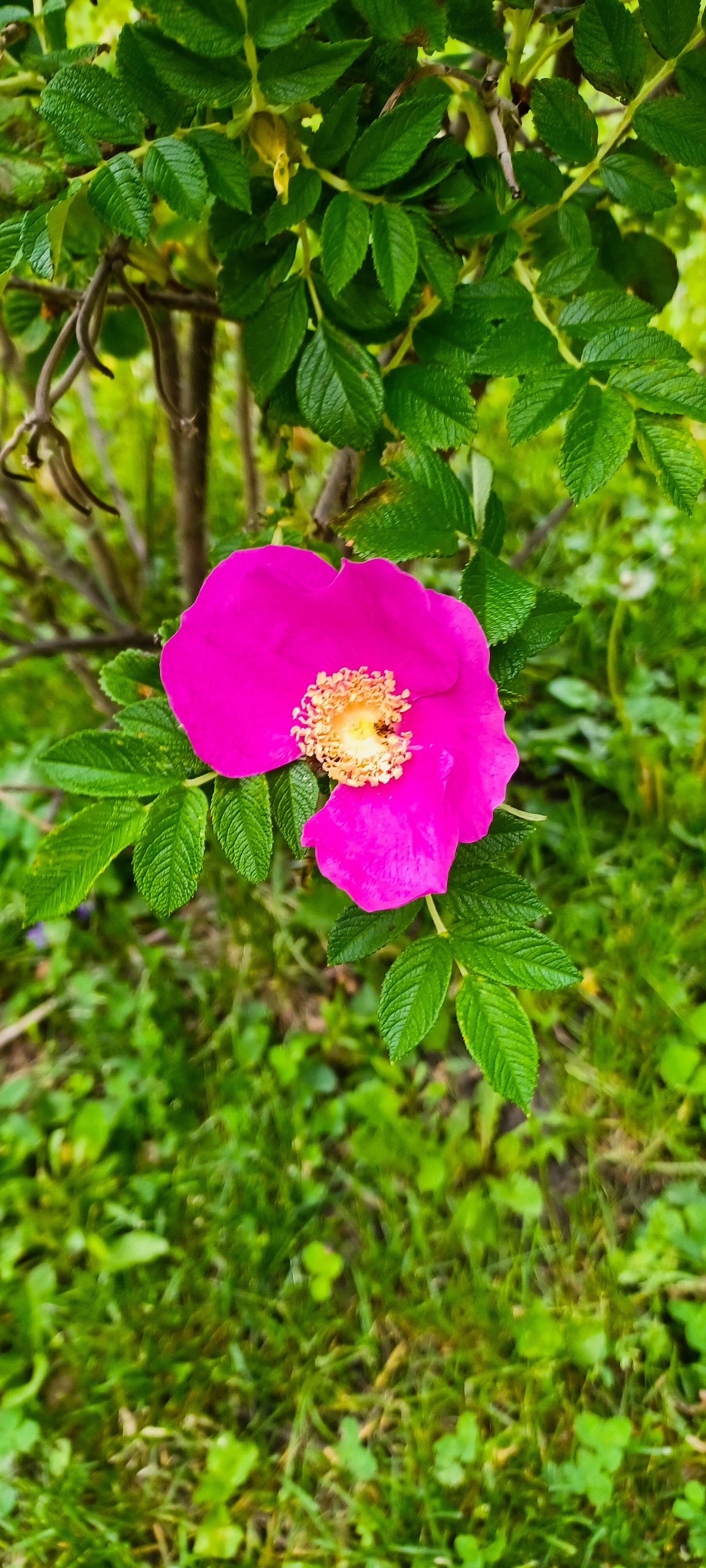Last week I gave a tour of the home garden and buffer zone to a person who had requested to see all of it. I showed them the fruit trees and berry bushes - how I placed the serviceberries so they’d grow to give partial shade to the gooseberries, who are prone to some sun scalding.
I showed them the pollinator patches of native plants - the golden alexanders or Zizia were an unknown plant to them so we got to bask in their little pointillist suns in bloom at the moment. A purple splash of spiderwort here and there as well, but otherwise the prairie plants are stretching themselves up towards the sun and unfolding their leaves, preparing for their flowers to emerge later in the season.
My partner, mower of the decreasing amount of lawn, has been giving an extra wide berth around these patches and they’ve begun to spread little by little, which has been a joy to see. “I prefer a cultivated edge,” my tour attendee stated. Most people do! But look what the plants can do if you let them.
I showed them the asparagus bed and the vegetable beds that are already feeding us. I explained how I planted the asparagus patch last year, which involved digging a trench and not harvesting a single spear that came up. This year the harvest window is two weeks long, and we ate the most tender delicious asparagus babies you’ve ever tasted in your life. A little bit of oil, a little bit of lemon juice, salt and pepper, roasted in the over for 30ish minutes: heaven. Digging that trench was absolutely worth it for food that tastes this good. Next year we harvest for four whole weeks, which feels very devil emoji. Now the asparagus season has ended and our pee is finally returning to normal.
I explained how the rabbits have been my teachers - running me through all the phases of grief when they chomp on the lettuce that I have laid out as a neat little buffet line for them, or take the tops off my baby berry bushes in the dead of winter when there’s not much else for them to eat. I’m learning to notice my rigidity and denial sooner so I can get to acceptance faster. When I arrive at acceptance I can actually do something about it! Operation Wascally Wabbit Exclusion is in full swing over here now.
I showed them the baby bur oaks that I planted early in the spring, a keystone species in this biome that supports hundreds of insects, caterpillars, moths, and so on. Their tiny little rusty red leaves are sprouting so tenderly and I haul five gallon buckets of water out to where they’re planted once a week in the hopes that they’ll grow tall and strong for the next century to come.
I showed them the hügelkultur herb spiral and all of the happy plants growing there: rosemary, parsley, mugwort, lavender, chives, stinging nettle, skullcap, foxglove beardtongue, and yarrow are all growing joyfully in the sun. My companion was horrified that I’d planted stinging nettle on purpose (and truly - it does really fucking hurt when you brush against one!), and skeptical of some of the herbs that they’d never heard of.
A few of them I’ve never grown before, but I’ve heard that mugwort can bring vivid dreams that you remember after waking, and that skullcap has a calming effect. And I’m very inspired by the NettleFest of Sister Spinster (Nettle whipped butter! Nettle pasta! Pickled nettle eggs!!!) - enough to risk getting stung. I’ve got long sleeves and work gloves and an adventurous palate.
I explained the no-till philosophy that I subscribe to, which advocates for keeping the ground covered with plants and mulch as much as possible, for a variety of very good reasons (mostly by helping to keep nutrients in the soil where they are available to other plants I might plant). There are many places where I’ve allowed violets, dandelions, and Canadian goldenrod to come up around the cultivated spaces, and this I think to many lovers of Ye Olde English garden ideal reads as messy and weedy.
It is, granted, a lot of space that requires a lot of work, especially because I don’t use any herbicide to keep the weeds down. I’ve written before about changing my relationship to work, from something I never found to be meaningful until gardens and gardening came into my life - shifting my practice from toil to devotion.
At the end of the tour the person said, and I quote: “Well I’m glad it’s not my garden!” As someone who is a recovering people-pleaser, who wants to be completely understood and approved of at all times, this sent me into a bit of a spiral of many different feelings. But I think ultimately there is so much wisdom in the sentiment.
It is only my garden that is mine to tend. I have put years and years of study, thought, trials and errors, bloodsweat&tears into making it the garden that it is. Of course someone whose values and priorities are completely different from mine will set about tending another kind of garden altogether. And we can apply this to every other part of life as well.
So I guess this is just to say: may we all only tend the gardens that are ours to tend. And, too: may we not dismiss out of hand what doesn’t come cut to fit our pre-existing tastes and likings. May we not dismiss out of hand the plants and shapes we don’t already know.
An Offering
Did you know: my work and my calling is designing gardens for people! I design gardens to fit people’s actual lives and available time, budgets, and space. I want to help people create and grow the gardens that are theirs to tend. I am deeply invested in helping to shift people’s yards and balconies of every size towards ecologically sound practices, through a wide variety of food-producing and native plants that are both beneficial for the local pollinators and beautiful to look at, tailored to the site requirements, and using as little water and outside store-bought amendments as possible.
The results have been amazing to see - one client has taken what was an unkempt and overgrown space and turned it into a fertile home garden using my design for perennial fruit bushes, a plot for cannabis, raised beds full of vegetables and kitchen herbs, vining perennials with gorgeous flowers that will screen out the neighbors - and it’s just the first year. My design proposal came with an hour-long presentation and a resource guide with information on installation, plant sourcing and care, tools, maintenance, and helpful local resources.
I am offering a free 30-minute consultation to anyone who subscribes to this newsletter. We can talk about anything you like - brainstorming about adding more native plants to your space, water and/or soil management issues, what vegetables grow well in containers (hint: a lot more than you might think!). Just respond to this email with the topics, questions, or concerns you want to go over and some general times for availability and we will work out a time to meet over Zoom.
Thanks for being here. See ya next time.








